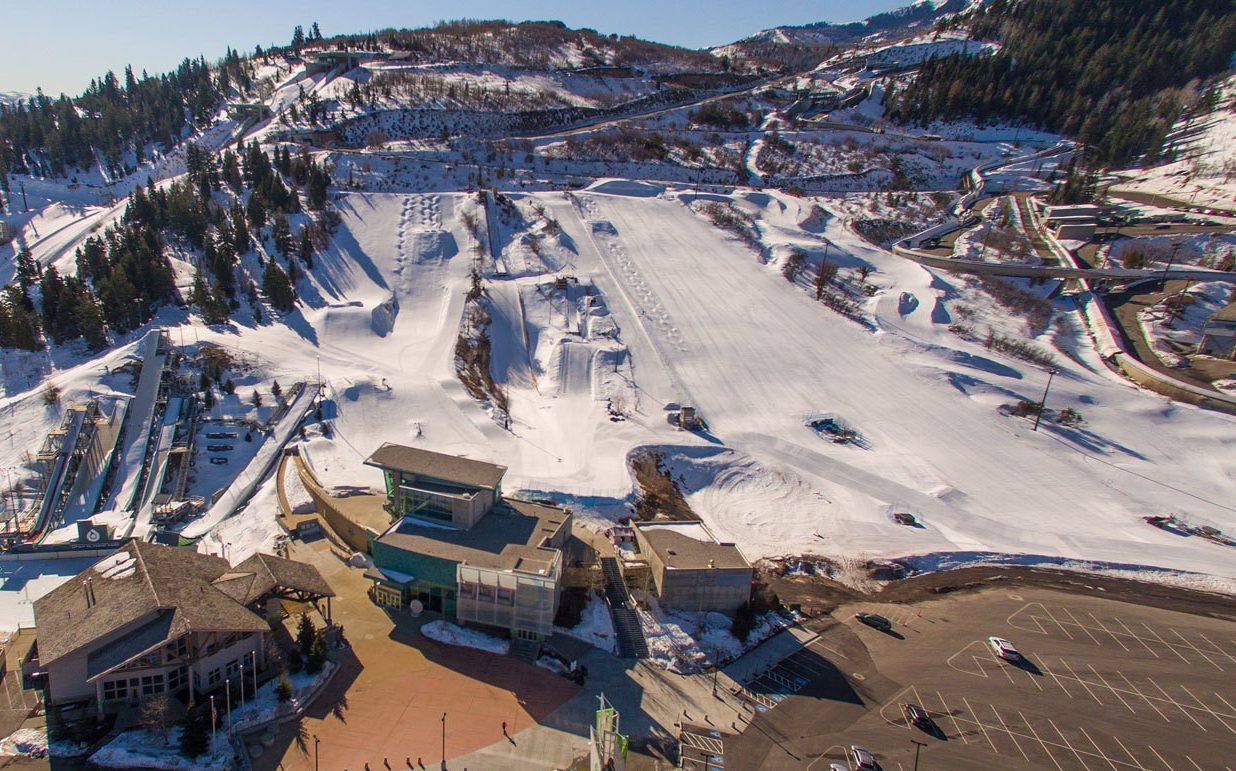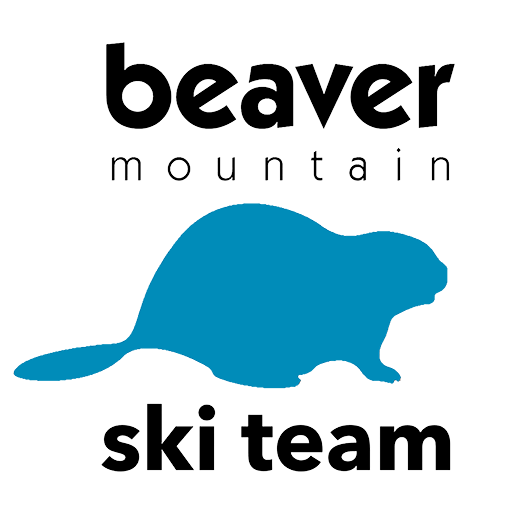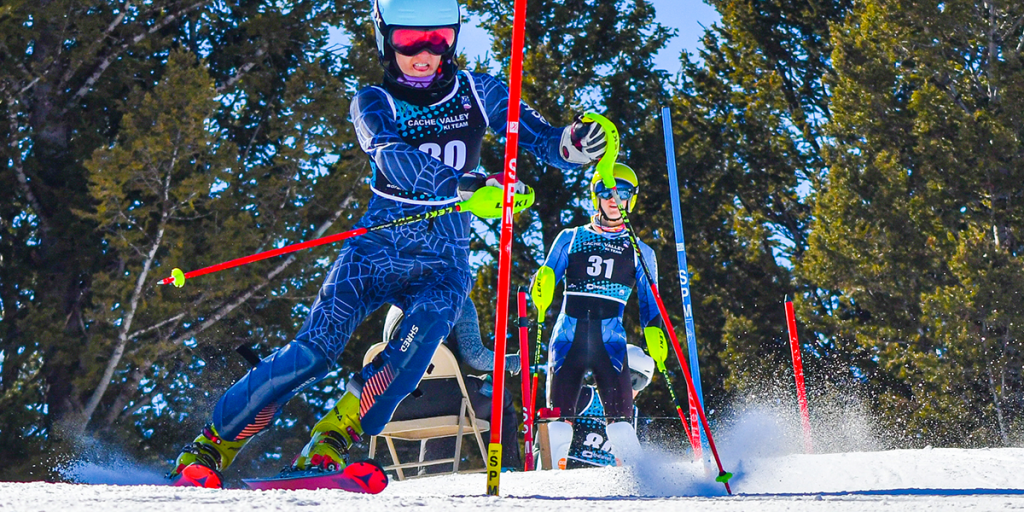
Our Training Philosophy
We believe our mission and pillars are best embodied when athletes train and compete in settings that foster fundamental skill development, general athleticism, and passion for the sport of skiing. This will look different for all athletes and it is important that our club’s coaches and parents communicate regularly with their athletes to ensure their needs and goals are being met. Regardless of athletes’ current or potential ability, all Beaver Mountain Ski Team coaches will: (a) maintain a focus on building basic skills in all areas of the alpine ski racing that will lead to athletes’ acquisition of more specialized skills over time, (b) have athletes apply newly learned skills in a multitude of environments to build higher capacity in all elements of ski racing, and (c) model perseverance and resilience, catalyzing athletes’ passion to pursue constant improvement and enjoyment through skiing.
These goals will be accomplished by having our less experienced athletes prioritize fun and learning while skiing all terrain and engaging in self-discovery. When in the gates, these athletes will be challenged with imaginative and gamified sets designed to increase skillfulness and enjoyment. Our more experienced athletes will develop transferrable skills across a variety of terrain and tasks, and will prioritize technical and tactical mastery in event-specific training environments. Sets will be designed to introduce line and tactics on SL and GS training courses that have variety and purpose.
Our Training Principles
In line with the USSA Alpine Training Systems, Beaver Mountain Ski Team’s seasonal and daily training plans will include a mix of the following elements: coached all-mountain skiing, coached drills, coached gate training, competitive simulations, and ample opportunities for unstructured all-mountain skiing with friends and family. Athletes of all ages should engage in training that includes a mix of these elements, though the time spent in each setting will change as athletes progress in skill, age, and competitiveness. An appropriate mix of these elements can be achieved in many ways, namely by designating certain days or blocks of training to certain elements, or by arranging each run in a training session to include various elements in sequence. Whatever the approach, Beaver Mountain Ski Team is committed to delivering training to its athletes that includes all of these elements and adheres to the USSA Alpine Training Systems’ suggested percentages as a starting point for training design and delivery.
Seasonal and daily training plans will include intentional drill progressions that allow athletes to evolve from low to medium, medium to advanced, and advanced to elite in the various skills that serve as the foundation of ski racing (e.g., balance, edging, pressure, rotary). This should culminate in Beaver Mountain Ski Teamathletes developing a skill blend appropriate to their age and competitiveness. We are committed to utilizing video, real-time assessment, and race simulations to assess learning gains and skill acquisition. Coaches will adapt their coaching style and adjust feedback in an effort to improve and refine daily engagement with athletes.
The mental aspects of sport performance will be emphasized with all athletes. Coaches will demonstrate a clear purpose and systematic approach to athletes’ goal setting and will pursue and support challenging goals for all athletes’ training and competition. Training sessions will begin with coaches summarizing tasks and goals and will end with reflection opportunities (e.g., discussion, journaling, film review). Reflective opportunities will be used to evaluate athletes’ experiences and performances, and coaches will refine process goals and routines based on daily outcomes. Coaches will identify self-talk patterns and their effect on athletes’ attitudes and focus, assigning verbal cues and scripts that support engaged participation and growth. Athletes will learn mindful practices to strengthen their ability to focus, formulating cues and routines that support focusing on the right thing at the right time.
Preseason Dryland Training
Dryland training is essential for alpine skiers because it builds the strength, agility, and endurance needed to perform at a high level on snow. Skiing demands powerful legs, a stable core, quick reaction time, and exceptional balance — all of which can be developed more consistently and safely in the off-season through focused workouts. Plyometrics, strength training, coordination drills, and cardiovascular conditioning not only enhance performance but also help prevent injury by preparing muscles and joints for the high-impact forces experienced during ski training and competition. Dryland training also reinforces discipline, teamwork, and athletic confidence, helping Beaver Mountain Ski Team athletes transition into winter feeling prepared physically and mentally. In short, the work done off the mountain is what allows our athletes to excel on it.
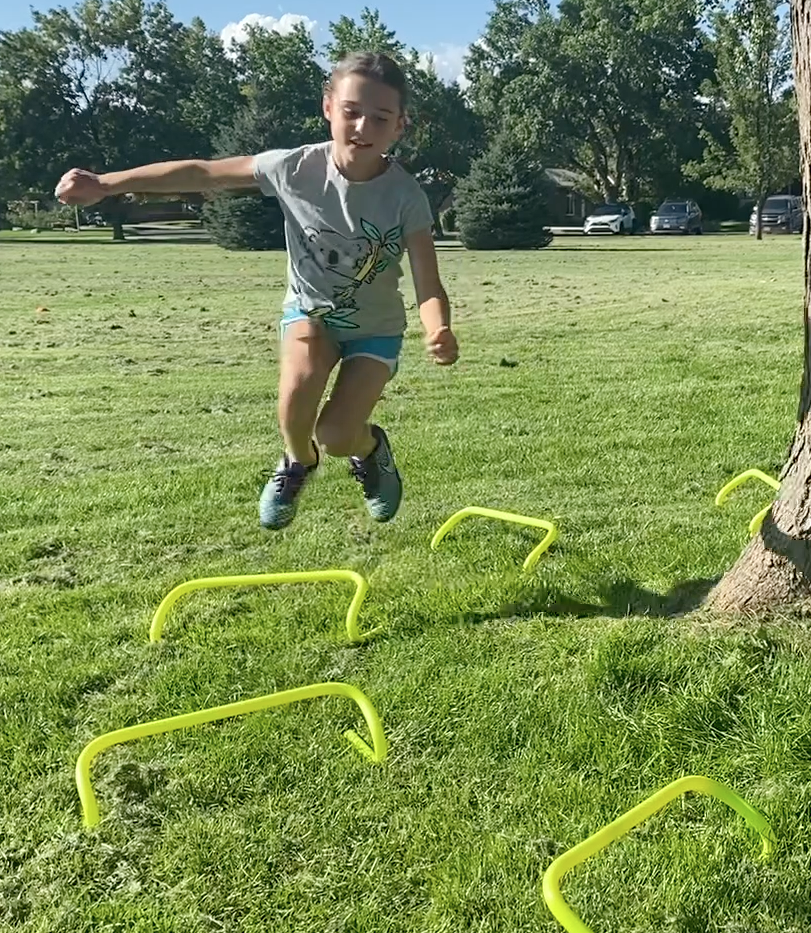
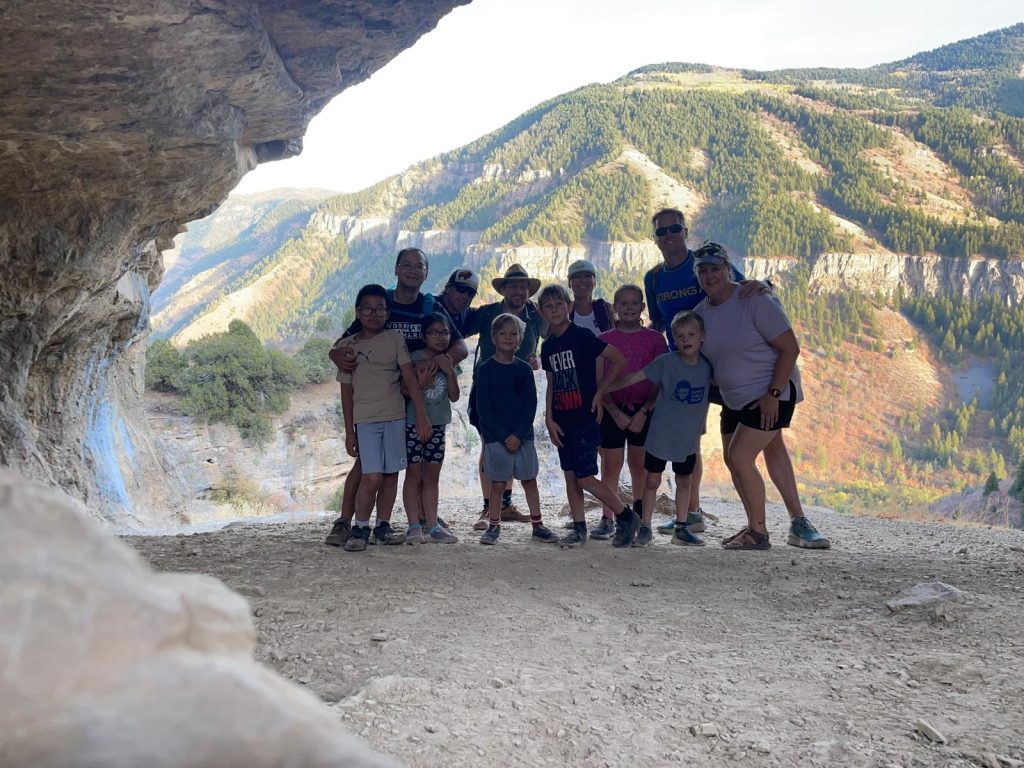

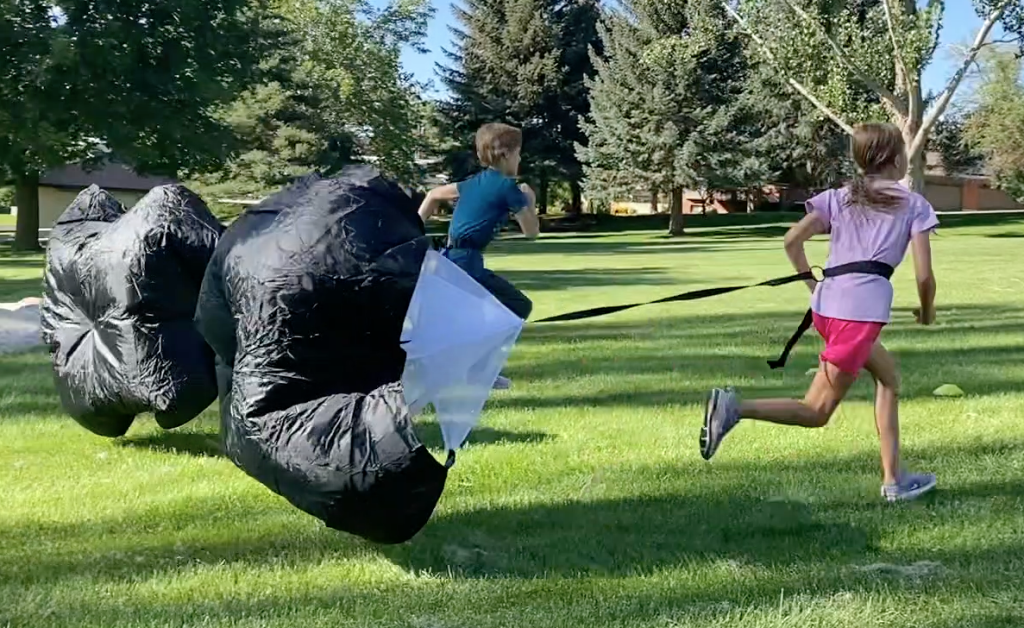
Our Home Mountain
Beaver Mountain, affectionately known as “The Beav”, is a rare gem in American skiing: family-owned, community-rooted, and proudly independent since day one. Located in Utah’s Logan Canyon, Beaver Mountain has welcomed skiers since 1939, making it the oldest continuously family-owned ski resort in the state, and one of the longest-running in the country. The mountain’s story begins with Harold Seeholzer, a local who bought his first pair of skis in 1918 and never looked back. By the late 1930s, Harold and the Mt. Logan Ski Club were pushing to make winter access to the mountains possible. When Logan Canyon became plowed year-round in 1939, Harold and the club installed a rope tow powered by an old DeSoto car engine — marking the official start of Beaver Mountain.
In 1945, Harold took over full operations, driven by a vision of skiing that was affordable, accessible, and centered around families. Over the years, he and his family built out the resort with warming huts, tows, and eventually chairlifts. A major milestone came in 1970 with the opening of Harry’s Dream, a 4,600-foot double chairlift named in Harold’s honor after his passing in 1968. The lift opened up a wide swath of new terrain and symbolized the dream that continues today. Through the decades, the Seeholzer family never wavered in their commitment. They installed electricity in 1986, upgraded lifts like Little Beaver and Harry’s Dream, added Marge’s Triple, and introduced night skiing, all while keeping the mountain personal, affordable, and rooted in tradition. Beaver Mountain has grown, but over 85 years later, the Seeholzers still run the show. From the top of the mountain to the ticket window, three generations work side-by-side to keep the dream alive. It’s not just a ski area, it’s a living legacy built on deep snow, deeper values, and a love for the mountain that started with one family and grew into a community.
Beaver Mountain Ski Team has dedicated training space off Little Beaver, utilizing Tiny Tim on weeknights for slalom training and Harv’s on weekends for giant slalom training. The team is also in the process of homologating a race arena off Harry’s Dream, utilizing the top and bottom sections of Stan’s Bonanza for slalom, giant slalom, and super-g courses.
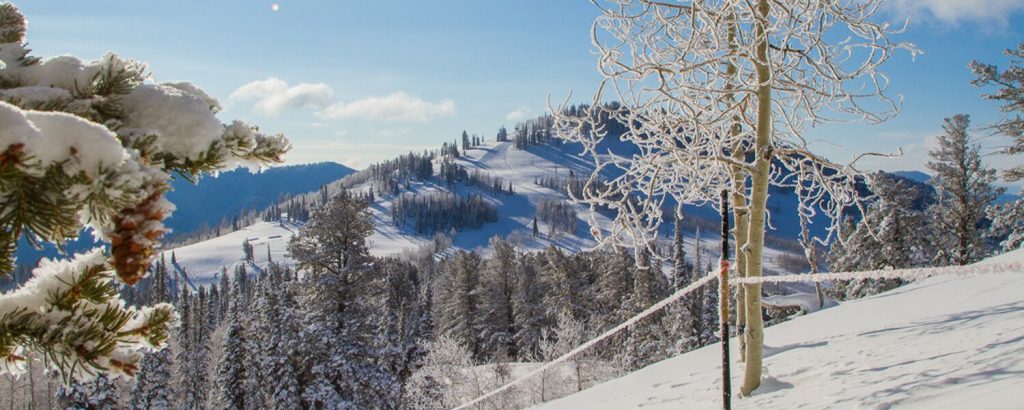
Supplemental Training
On Tuesday evenings during the core season, Beaver Mountain Ski Team athletes have the opportunity to train at Utah Olympic Park, located just outside Park City. The training venue was originally built for the 2002 Winter Olympics and is managed by the Utah Olympic Legacy Foundation. While widely recognized for its world-class sliding track and Nordic jumping facilities, the park has evolved into a premier year-round training hub for alpine skiers. Spanning roughly 400 acres, Utah Olympic Park offers a unique high-performance environment where winter athletes of all ages can train side by side. Unlike traditional ski resorts, Utah Olympic Park is engineered for efficiency—athletes can access lifts, terrain, coaching, and video review in tight proximity, maximizing on-snow volume and minimizing transition time. Utah Olympic Park functions as far more than a heritage venue—it is an active, evolving training center designed for efficiency, safety, and progression. With access to controlled terrain, extended training hours, and world-class development tools, it serves as a vital development pathway for youth athletes through elite competitors preparing for regional, national, and international competition.
